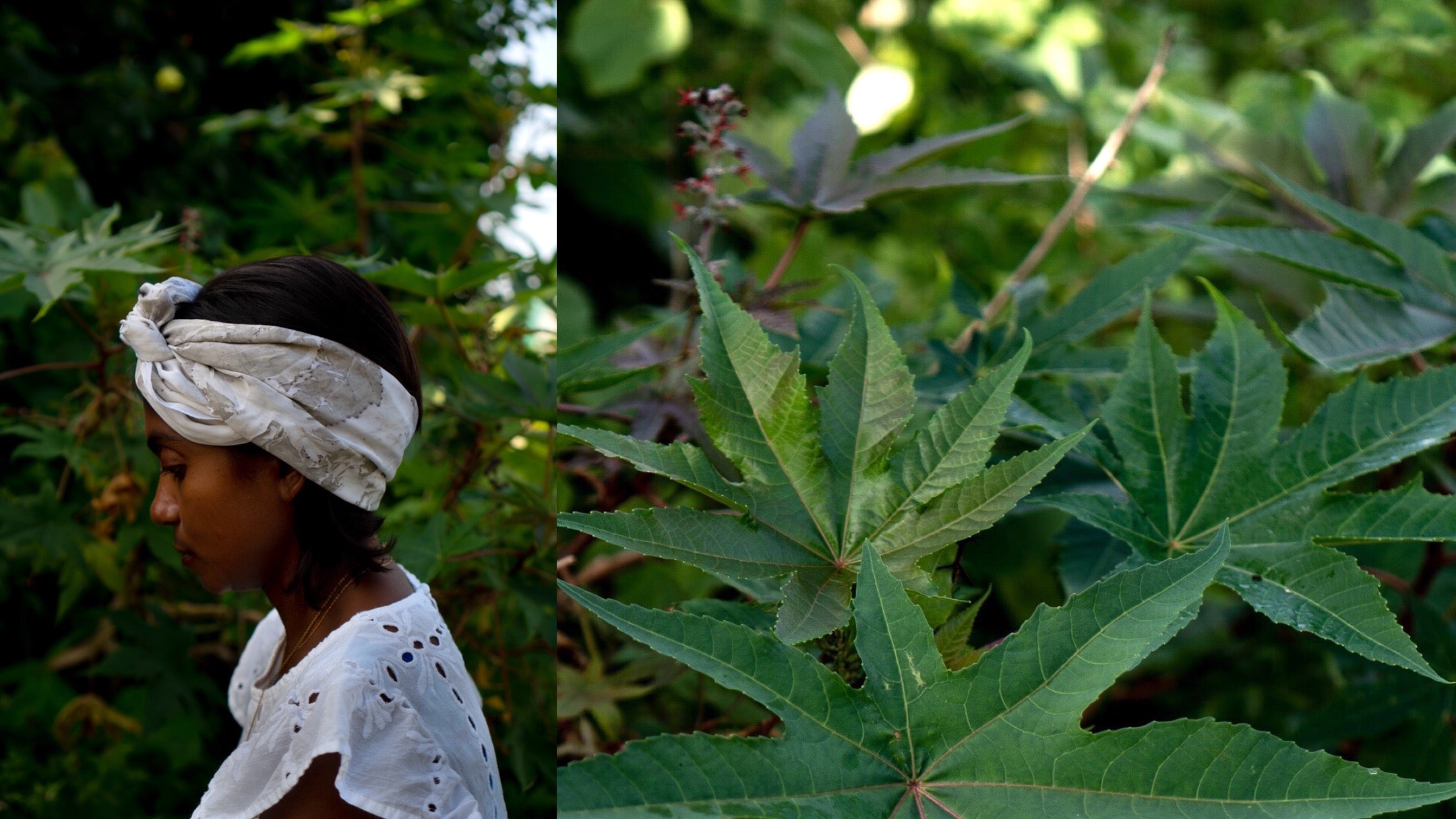Back when I was working on building the DEVI brand and concept, rummaging through various fragrant plants for inspiration, I came across the botanical printing on fabric. I was immediately intrigued and wanted to learn the technique and science behind this artform.
Like aromatic species, dye plants have their own specific functions. For instance, while scents attract pollinators like bees, birds or other curious critters, the compounds in dye plants serve to protect the plant from pests and diseases.
Fascinating, right? I thought so too.
Equally interesting, I learnt that these functions can also be beneficial to humans in other forms. Dye plants are typically medicinal, and their flowers are often used in aromatherapy as well.
Rose and Ylang Ylang are good examples. Rose leaves are used to create dyes while essential oil derived from the rose has high therapeutic value for the mind and body.

You might already know that Ylang Ylang, or Champapool in Dhivehi, is grown across the archipelago as an ornamental plant – but did you know that the flowers also make for excellent dyes?

In the dyeing process, local leaves such as Midhili (Sea almond tree), Aamanaka Leaf (Castor Leaf), Guava Leaf, and Rose leaf are commonly used.These plants are rich in tannins, a protective component stored in their leaves, barks, and stems to ward off bacterial and fungal infections. Plants rich in tannins are good dye plants as this compound helps in giving out the dye and holding the dye on the fabric. 
Natural dyes used in the Maldives
Liyelaa or Laa Jehun
In the Maldives, lacquer work is a celebrated craft that was historically practised throughout all regions, featuring a distinct color palette and signature motifs passed down generations.

Traditionally, the lacquer was mixed with a substance called Uguli to produce a brilliant red shade. Fashurisseu, a local herbal medicine, was used to create lighter ‘yellow’ tones while the sharp contrast of black was brought about by capturing tar from smoke collected on a ceramic tile while burning an oil lantern.

Thundu Kunaa Viyun
The viyun or weaving of thundu kunaa (handmade mats) is a craft passed chiefly from mother to daughter and originates from the Southern Atolls, where the wetlands in which such reeds grow are plentiful.
Once harvested, these fibres are sundried and dyed in shades of black, yellow and brown, or used in their natural state. Locally found roots, leaves and fermented coconut water are used to create these colours.
The dye for the blackened reed is derived from cooking Uni (Indian Lavender) tree bark in ash and salt water for several days. The root of Ahi gus (Noni tree) is used in the creation of the yellow, along with turmeric colouring.

The bark of the sea hibiscus tree locally known as dhigga is used for making the thread, and using a screw pine knife and a simple loom, mats are woven into traditional patterns, with specific patterns indicating different uses such as for sleeping, prayer, swings and so on.

Dhaa Viyun
Often referred to as the ‘lifeline’ of Maldivian islands, fishing here is an artform unto itself. Although most famous for the sustainable pole and line fishing, casting nets for live bait is also a key part of the process.
The nets that are used for catching these fish in the lagoon are handwoven – delicate but strong. It is said that weavers crush Kaani (Beach Cordia) leaves and dye the fish nets (and sometimes lines as well) to make them less visible underwater.

Heenaa Elhun
Henna, locally dubbed Heena, are found grown in different parts of the country – a remnant of our South Asian and Persian lines of heritage.
The leaves are ground into a paste, often mixed with other colouring agents like Beetroot juice, Indigo plants, or tea leaves to enhance certain shades, and applied to dye hands, or feet and as an organic hair dye.

Sometimes, people would adorn their the palms, soles or faces with intricate patterns created using a concentrated Henna paste that’s left to dry and stain for hours.


